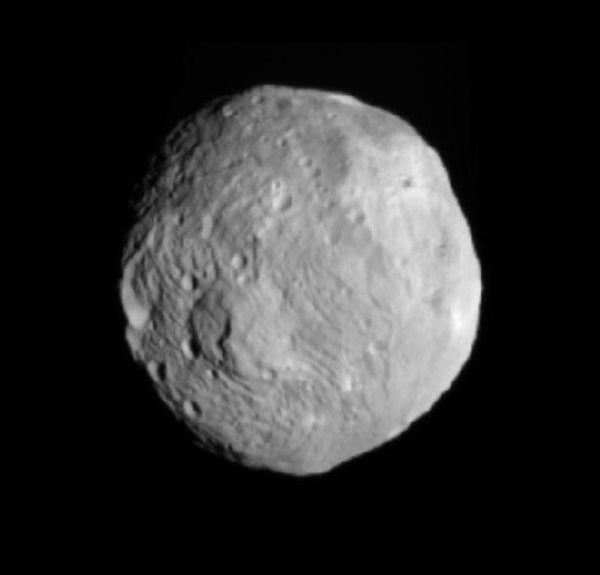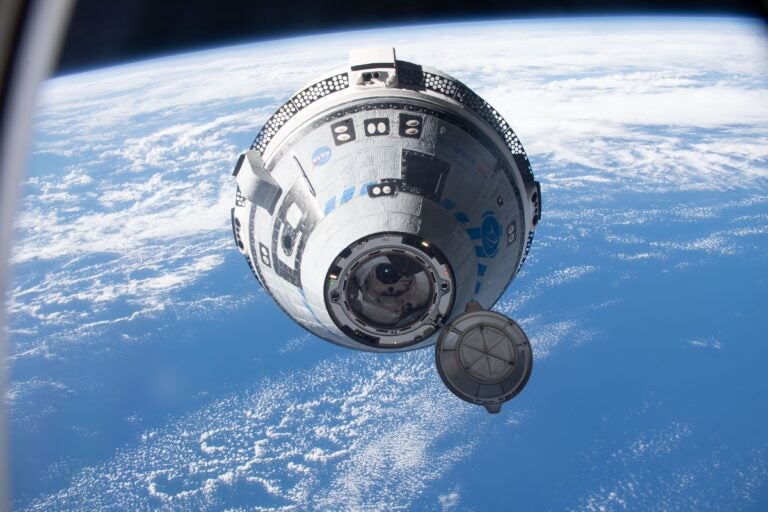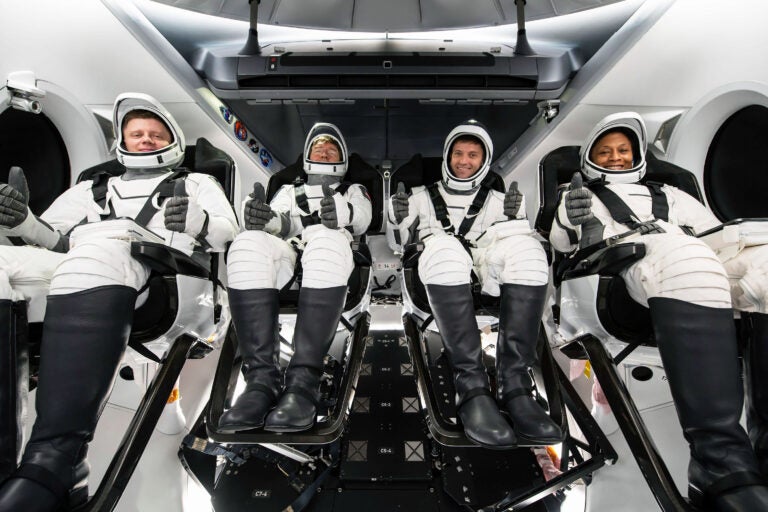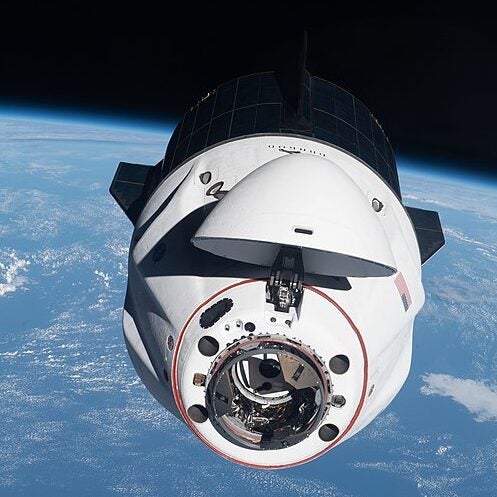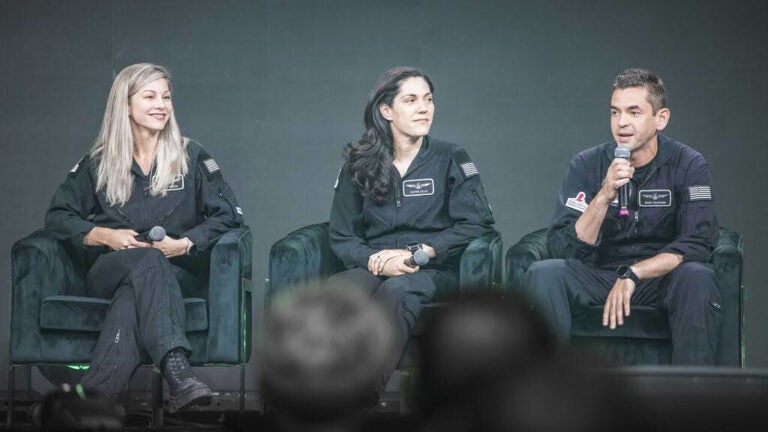The main asteroid belt lies between the orbits of Mars and Jupiter. Dawn will study Vesta for 1 year, and observations will help scientists understand the earliest chapter of our solar system’s history.
As the spacecraft approaches Vesta, surface details are coming into focus, as seen in this recent image taken from a distance of about 26,000 miles (41,000 kilometers).
Engineers expect the spacecraft to be captured into orbit at approximately 1 a.m. EDT Saturday, July 16. They expect to hear from the spacecraft and confirm that it performed as planned during a scheduled communications pass that starts at approximately 2:30 a.m. EDT Sunday, July 17. When Vesta captures Dawn into its orbit, engineers estimate there will be approximately 9,900 miles (16,000 km) between them. At that point, the spacecraft and asteroid will be approximately 117 million miles (188 million km) from Earth.
“It has taken nearly 4 years to get to this point,” said Robert Mase, Dawn project manager at NASA’s Jet Propulsion Laboratory in Pasadena, California. “Our latest tests and check-outs show that Dawn is right on target and performing normally.”
Engineers have been subtly shaping Dawn’s trajectory for years to match Vesta’s orbit around the Sun. Unlike other missions, where dramatic propulsive burns put spacecraft into orbit around a planet, Dawn will ease up next to Vesta. Then the asteroid’s gravity will capture the spacecraft into orbit. However, until Dawn nears Vesta and makes accurate measurements, the asteroid’s mass and gravity will only be estimates. The Dawn team will refine the exact moment of orbit capture over the next few days.
The main asteroid belt lies between the orbits of Mars and Jupiter. Dawn will study Vesta for 1 year, and observations will help scientists understand the earliest chapter of our solar system’s history.
As the spacecraft approaches Vesta, surface details are coming into focus, as seen in this recent image taken from a distance of about 26,000 miles (41,000 kilometers).
Engineers expect the spacecraft to be captured into orbit at approximately 1 a.m. EDT Saturday, July 16. They expect to hear from the spacecraft and confirm that it performed as planned during a scheduled communications pass that starts at approximately 2:30 a.m. EDT Sunday, July 17. When Vesta captures Dawn into its orbit, engineers estimate there will be approximately 9,900 miles (16,000 km) between them. At that point, the spacecraft and asteroid will be approximately 117 million miles (188 million km) from Earth.
“It has taken nearly 4 years to get to this point,” said Robert Mase, Dawn project manager at NASA’s Jet Propulsion Laboratory in Pasadena, California. “Our latest tests and check-outs show that Dawn is right on target and performing normally.”
Engineers have been subtly shaping Dawn’s trajectory for years to match Vesta’s orbit around the Sun. Unlike other missions, where dramatic propulsive burns put spacecraft into orbit around a planet, Dawn will ease up next to Vesta. Then the asteroid’s gravity will capture the spacecraft into orbit. However, until Dawn nears Vesta and makes accurate measurements, the asteroid’s mass and gravity will only be estimates. The Dawn team will refine the exact moment of orbit capture over the next few days.

